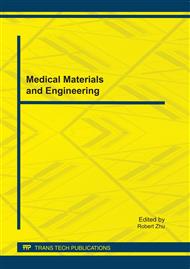[1]
White CS, Pugatch R, Koonce T, et al. Lung nodule CAD software as a second reader: a multicenter study. Academic radiology, 2008, 15(3): 326-33.
DOI: 10.1016/j.acra.2007.09.027
Google Scholar
[2]
Retico A, Delogu P, Fantacci ME, et al. Lung nodule detection in low-dose and thin-slice computed tomography.Computers in biology and medicine, 2008,38(4):525-34.
DOI: 10.1016/j.compbiomed.2008.02.001
Google Scholar
[3]
Sahiner B, Chan HP, Hadjiiski LM, et al. Effect of CAD on radiologists' detection of lung nodules on thoracic CT scans: analysis of an observer performance study by nodule size. Academic radiology, 2009,16(12):1518-30.
DOI: 10.1016/j.acra.2009.08.006
Google Scholar
[4]
Helm EJ, Silva CT, Roberts HC, et al. Computer-aided detection for the identification of pulmonary nodules in pediatric oncology patients: initial experience. Pediatric radiology, 2009,39(7):685-93.
DOI: 10.1007/s00247-009-1259-9
Google Scholar
[5]
Hein PA, Rogalla P, Klessen C, et al. Computer-aided pulmonary nodule detection - performance of two CAD systems at different CT dose levels. RoFo : Fortschritte auf dem Gebiete der Rontgenstrahlen und der Nuklearmedizin, 2009,181(11):1056-64.
DOI: 10.1055/s-0028-1109394
Google Scholar
[6]
Szucs-Farkas Z, Patak MA, Yuksel-Hatz S, et al. Improved detection of pulmonary nodules on energy-subtracted chest radiographs with a commercial computer-aided diagnosis software: comparison with human observers.European radiology, 2010,20(6):1289-96
DOI: 10.1007/s00330-009-1667-0
Google Scholar
[7]
Marten K, Engelke C. Computer-aided detection and automated CT volumetry of pulmonary nodules.European radiology, 2007,17(4):888-901.
DOI: 10.1007/s00330-006-0410-3
Google Scholar
[8]
Chunming Li,Chenyang Xu,Changfeng Gui. Level Set Evolution Without Re-initialization: A New Variational Formulation. IEEE Computer Society Conference on Computer Vision and Pattern Recognition, 2005. CVPR 2005. vol. 1,430 – 436.
DOI: 10.1109/cvpr.2005.213
Google Scholar
[9]
Rodenacker K.,Invariance of textural features in image cytometry under variation of size and pixel magnitude,Anal Cell Pathol. 1995,8(2):117-33.
Google Scholar
[10]
Das M, Muhlenbruch G, Mahnken AH, et al. Small pulmonary nodules: effect of two computer-aided detection systems on radiologist performance.Radiology, 2006,241(2):564-71.
DOI: 10.1148/radiol.2412051139
Google Scholar


